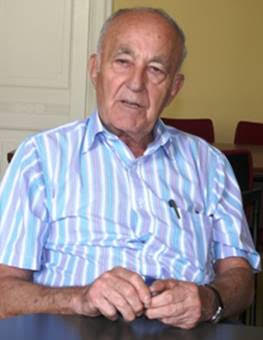
THE VOICE OF INTERNATIONAL LITHUANIA
|
VilNews has its own Google archive! Type a word in the above search box to find any article.
You can also follow us on Facebook. We have two different pages. Click to open and join.
|
Archive for July, 2011
![]()

Žygimantas Pavilionis is a career diplomat who became ambassador of Lithuania to the United States in August 2010.
Born on August 22, 1971, in Vilnius, Pavilionis grew up with parents who prized higher education; his father, Roland Pavilionis, being an academician and his mother, Mary Pavilionienė Venus, a professor.
He attended college at Vilnius University, where he earned a master’s degree in philosophy and postgraduate diploma in international relations.
In 1993, Pavilionis joined the Ministry of Foreign Affairs and worked in the Western European Division, with the rank of third secretary.
He was assistant director of policy from 1994-1995, before moving to the Ministry of European Integration, Department of Political Cooperation.
He worked in Brussels, Belgium, at the Lithuanian Permanent Mission from 1999-2002.
Pavilionis was then promoted to lead the Ministry of Foreign Affairs’ European Integration Department from 2002-2004.
Most recently, he served as ambassador-at-large and chief coordinator for Lithuania’s presidency of the Community of Democracies, as well as chief coordinator for the Transatlantic Cooperation and Security Policy Department at the Ministry of Foreign Affairs.
Pavilionis and his wife, Lina Pavilioniene, have four sons.
-Noel Brinkerhoff
http://www.allgov.com
- Bookmark :
- Digg
- del.icio.us
- Stumbleupon
- Redit it
- Posted by - (1) Comment
Chronicle of Lithuania
in a global perspective
Lithuania is a country that cannot be understood if you don’t know at least
something about its exceptional past and its extraordinary global ties – with
Italy, India, South Africa, Israel, Poland, Belarus, Ukraine, Crimea/Turkey,
Sweden, Germany, Russia, Australia and America
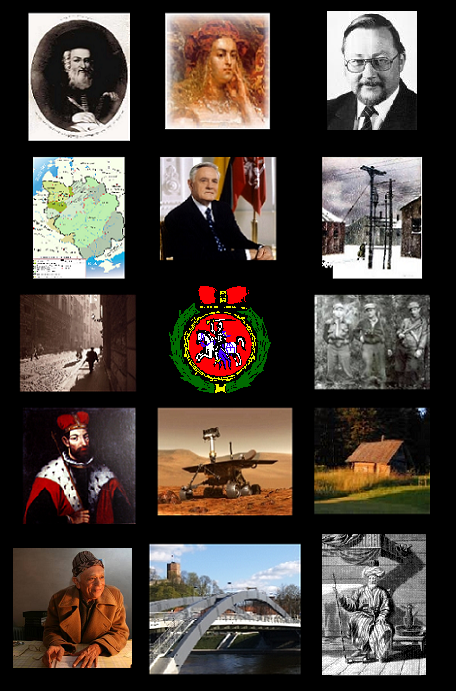
LITHUANIA - IN A GLOBAL PERSPECTIVE
A Chronicle of historic and contemporary Lithuania and her relations to the world
See also: https://vilnews.com/?p=886
I have, over the years since I first came to Lithuania from my native Norway in 1990, often wondered why authorities or other institutions here haven’t published a chronicle describing the many ties and touching points this amazing country has to the rest of the world throughout historical and modern times.
Because Lithuania is a country that cannot be understood if you don’t know at least something about its exceptional past and its extraordinary ties with Italy, India, South Africa, Israel, Poland, Belarus, Ukraine, Crimea/Turkey, Sweden, Germany, Russia, Australia and America.
This was why I some years ago put together my own electronic ‘Chronicle of Lithuania in a global perspective’. that I often have used for presentations to guests and others with some interest in this little country that once was a ‘superpower’ of world class and for hundreds of years a thriving cradle for co-existence between people from many nations, cultures and religions. Or, as the British historian Norman Davies puts it: “Lithuania was a haven of tolerance”. Davies was not the only one who took notice of this. Erasmus of Rotterdam (1466 – 1536) is quoted as stating; “I congratulate this nation [Lithuania] which now, in sciences, jurisprudence, morals, and religion, and in all that separates us from barbarism, is so flourishing that it can rival the first and most glorious of nations.”
I know that foreign embassies and international companies, as well as many individuals, for many years have been using my ‘chronicle’ when they try to describe Lithuania to people and institutions in other countries, and I also urge you, dear readers, to pass on a link to this 'chronicle' to all your friends and acquaintances. That’s how we together can make Lithuania better known and understood for people around the globe...
Please keep in mind, however, that this is my personal collection of articles and impressions, not in chronological order, hence it might very well be that a historian would have chosen other articles and put together the information in a completely different manner. Nevertheless; have a good read. I believe afterwards you will agree with me that Lithuania is a truly amazing and far too little known spot on the world map!
Aage Myhre, Editor-in-Chief
TOPIC 1:
Lithuania’s peaceful fight for new freedom 1988 – 1991
The little stroke that fell the great bear and opened for the new era of a united Europe
|
|
|
|
Funeral of the victims of the 13 January 1991 Soviet attacks on Lithuania.
|
Professor Vytautas Landsbergis, January 1991. |
"Lithuanians, do not resist, your government has deceived you. Go home to your families and children."
This was the repeated announcement from the Soviet military ‘sound trucks’ rolling through the streets of Vilnius in January 1991. But luckily for Lithuania and for the new united Europe we today take more or less for granted, there was a music professor and a complete little nation that wanted it all differently. Hadn‘t it been for this peaceful fight for regained freedom against an occupation and a ruling the people of the Baltic States never wanted or agreed to, the map of Europe would most likely have looked very different today...
If there were those in the West who hadn’t heard about Lithuania before, they almost certainly had by the end of the day, 13 January 1991. That was the day Soviet troops cracked down in Vilnius and the resulting bloodshed made headlines around the world. The action was apparently a bid to stop Lithuania’s independence drive in its tracks. By the time the firing stopped and the smoke cleared, more than a dozen people lay dead, and hundreds more were injured. The crackdown, and particularly the killings at the TV tower, not only brought fame and sympathy to Lithuania from around the world, it was also a defining moment for Lithuanians themselves.
The bloodshed meant they had crossed a point of no return. If there was ever any notion of reconciling with Moscow, it was now unthinkable. For those watching from abroad, Vytautas Landsbergis was the central player in the drama unfolding in Vilnius. The colourful, quick-tempered music professor became Lithuania’s president (or chairman of the Lithuanian Supreme Council) in 1990 and, from that time on, his name became almost synonymous with the Lithuanian independence movement. His blunt talk about breaking free of the Soviet Union and about Lithuania’s moral right to be able to do so startled observers in the West almost as much as it infuriated the Kremlin.
See also: https://vilnews.com/?p=3642
TOPIC 2:
South Africa, home to 70.000 Lithuanian Jews


|
|
|
|
“This postcard was the last sign of life my father had from his father. It was sent from my grandfather’s home here in Kupiskes (North Lithuania) in March 1941 to my father’s new home in Pretoria (South Africa), but my grandfather was most probably already dead when the postcard reached Pretoria late summer 1941. He was killed by the Nazis”.
Attorney Ivor Feinberg, Lithuania’s consul in Pretoria, is obviously very touched when he visits his grandfather’s house in Kupiskes, telling us about the last memory of his grandfather – a memory not unlike many other stories related to the about 70.000 Jews of Lithuanian descent living in South Africa.
|
|
Lithuanians dominate the Jewish community in South Africa to an extent seen in no other country, even their former home. "We have around 80.000 to 90.000 Jews in South Africa, and about 80 percent of them are of Baltic descent, most of them from Lithuania," saYS David Saks, an historian and researcher at the Jewish Board of Deputies in Johannesburg. "We probably have the most 'Lithuanian' Jewish community in the world," said Saks, whose own grandparents came from Lithuania.
This ratio even exceeds that of Lithuania itself as most of the Baltic State's small Jewish community, now numbering a mere 5.000, is comprised mostly of immigrants who arrived from different parts of the Soviet Union after World War Two.The war devastated Lithuanian Jewry, once a leading centre of Jewish thought and culture. Historians estimate that 94 percent of the country's pre-war Jewish population of 220.000 perished in the Holocaust. The capital Vilnius, once known as the Jerusalem of the North, was home to a thriving community of 60.000 Jews, with more than 90 synagogues and the biggest Yiddish library in the world. Aside from one functioning synagogue, few traces of its rich Jewish past remain.
"South Africa is more Litvak than Lithuania itself...we see our culture and society have been preserved there," says playwright and novelist Mark Zingeris, one of the few Litvaks remaining in Lithuania.
See also: https://vilnews.com/?p=1703

































TOPIC 3:
Italy’s extraordinary, little known role in Lithuania
|
|
|
|
|
Sigismund the Old |
Bona Sforza
|
The Royal Palace – once again being rebuilt |
When Lithuania’s Grand Duke Sigismund the Old in 1518 married the Italian Princess Bona Sforza, this became another outstanding manifestation of the already strong relationship between Italy and Lithuania.
The royal couple created together an Italian community within the court and Italian culture became the preoccupation of the Vilnius city elite. Macheroni, skryliai, and even the confection marcipanus became staples among the cogniscenti and life at court became a series of cultural events, with rich noblemen competing for extravagance. During the rule of Sigismund the Old the palace was greatly expanded, to meet the new needs of the Grand Duke and Duchess. Another wing was added, as well as a third floor and the gardens were also extended. The palace reconstruction plan was probably prepared by Italian architect Bartolomeo Berrecci da Pontassieve.
The Royal Palace – that now again is being rebuilt – was remodelled by Bona Sforza and Sigismund the Old in Renaissance style. The plans were prepared by Italian architects, including Giovanni Cini da Siena, Bernardino de Gianotis Zanobi, and others. Among the many visitors to the Palace was Ippolito Aldobrandini, who later became Pope Clement VIII, also this emphasizing the extraordinary connections between Italy and Lithuania that lasted for hundreds of years – also giving background for the saying that ‘Vilnius is the world’s most Italian city outside Italy’.
Throughout the Renaissance, when Italy was the leading trading centre and a melting pot for the world’s greatest civilizations, also Vilnius also became a leading Renaissance centre of world class, competing only with Florence and Milan.
See also: https://vilnews.com/?p=2927 and https://vilnews.com/?p=1652
TOPIC 4:
The Lithuanian-Americans, a nation outside the nation
|
|
|
|
Ex-President Valdas Adamkus is today’s most famous US-Lithuanian
|
Distribution of Lithuanian-Americans according to the 2000 census |
Many Lithuanians immigrated to the New World before the American Revolution. The first may have been a Lithuanian physician, Dr. Aleksandras Kursius, who is believed to have lived in New York as early as 1660. Most of the other Lithuanians who ventured to the Americas during this period were members of the noble class or practitioners of particular trades. But the first really significant wave of Lithuanian immigration to the United States began in the late 1860s, after the American Civil War. During the late nineteenth and early twentieth centuries, an estimated 300,000 Lithuanians journeyed to America. A flow that was later halted by the combined effects of World War I, the restriction of immigration into the United States and the achievement in 1918 of Lithuanian independence.
The second wave of immigration had a greater impact on U.S. census figures. Following World War II, a flood of displaced refugees fled west to escape the Russian reoccupation of Lithuania. Eventually 30,000 Dipukai (war refugees or displaced persons) settled in the United States, primarily in cities in the East and the Midwest. These immigrants included many trained and educated leaders and professionals who hoped to return someday to Lithuania. The heightening of tensions between the United States and the Soviet Union—known as the Cold War—dampened these expectations, and many Lithuanians sought to create a semi permanent life in the United States. By 1990 the U.S. Bureau of the Census listed 811,865 Americans claiming "Lithuanian" as a first or second ancestry.
The main areas of Lithuanian settlement in the United States included industrial towns of the Northeast, the larger cities of the Northeast and the Midwest, and the coal fields of Pennsylvania and southern Illinois. According to the 1930 census report, only about 13 percent of Lithuanians lived in rural areas, and even fewer—about two percent—were involved in agriculture. Nearly 20 percent of all Lithuanian immigrants settled in Chicago alone. Throughout the twentieth century, Lithuanian Americans began to climb up the economic ladder and gain an important place in their local communities. This mobility allowed them to enter the American mainstream.
Two important developments in Lithuania led to the growth of a strong Lithuanian American ethnic identity: the late nineteenth-century rise of Lithuanian national consciousness and the achievement of Lithuanian independence in 1918. Lithuanian Americans were staunch supporters of their newly independent homeland during the 1920s and 1930s, and some even returned to assist in the restructuring of the country's economy and government.
The post World War II wave of Lithuanian immigrants—the Dipukai—also experienced a surge of Lithuanian consciousness. These later immigrants saw themselves as an exiled community and clung to their memory of two decades of freedom in Lithuania. They developed an extensive network of schools, churches, and cultural institutions for the maintenance of Lithuanian identity in the United States.
|
FAMOUS AMERICAN-LITHUANIANS (there are many more) |
||||||
|
The very first FBI Director, 1912-1919 |
Al Jolson (1886-1950) Singer and Entertainer |
(1921 – 2003) Movie Star |
Marija Gimbutiene (1921-1994) Archeologist
|
Birute Galdikus (1946 - ) Anthropologist, world leading authority on orangutans |
Dr. Juozas P. Kazickas (1918 - ) Business entrepreneur |
|
See also:
TOPIC 5:
Lithuania and India - same language root and more…
|
|
|


 Pictures: Aage Myhre
Pictures: Aage Myhre
It’s early morning in Delhi, India. I have been invited to the small, dark office of Professor Lokesh Chandra, one of India’s leading experts on Sanskrit and Buddhism. “The same year I was born, 1927, my father went to London to get a degree in Lithuanian language. He spoke the language fluently, but he never visited Lithuania”, tells the elderly professor, still with his Kashmir coat and cap on, despite the outside temperature of close to 300 Celsius. And I soon learn that the professor’s knowledge about the connections between Old Sanskrit and the Lithuanian language and ancient cultural ties between India and Lithuania is nothing but amazing…
It is a common belief that there is a close similarity between the Lithuanian and Sanskrit languages; Lithuanian being the European language grammatically closest to Sanskrit. It is not difficult to imagine the surprise of the scholarly world when they learned that even in their time somewhere on the Nemunas River lived a people who spoke a language as archaic in many of its forms as Sanskrit itself. Although it was not exactly true that a professor of Sanskrit could talk to Lithuanian farmers in their language, coincidences between these two languages were truly amazing, for example:
Sanskrit sunus - Lithuanian sunus; son Sanskrit viras - Lithuanian vyras; man
Sanskrit viras - Lithuanian vyras; man
Sanskrit avis - Lithuanian avis; sheep Sanskrit dhumas - Lithuanian dumas; smoke
Sanskrit dhumas - Lithuanian dumas; smoke
Sanskrit padas - Lithuanian padas; sole
We can assert that these Lihuanian words have not changed their forms for the last five thousand years!
Read also: https://vilnews.com/?p=4425 and https://vilnews.com/?p=4434
TOPIC 6:
Lithuania turned 1000 years in 2009!
"In 1009 St Bruno, who is called Boniface (Bonifatius), Archbishop and monk, in the second year of his conversion, on the border between Russia and Lithuania (Lituae), having been hit on the head by the pagans, and his 18 men went to heaven on the 23rd of February. "There are several sources that mention the event - the killing of the missionary but they refer to Prussia rather than Lithuania, which proves that both Germans and Poles did not know about the existence of Lithuanians then. They thought that Prussians were the only Balts (or the majority of Balts). Quedlinburg Annals mentioned Lithuania because they were keen on precision and the information was received from St Bruno's entourage. The story about St Bruno describes the political organisation of Lithuanians, which was peculiar and not characteristic of other Baltic tribes before the 13th century.
TOPIC 7:
Modern Lithuania in a new Europe
|
|
Lithuania has shown an impressive performance since its liberation from the USSR. The world recession was, however, hitting very hard, and there is now acutely necessary to search for new growth resources. A new growth cycle of the economy should focus on incentives and promotion of higher-quality high-tech industries, through R&D support, high-tech industry incubators, and appropriate educational focus.
The general strengths of Lithuanian national innovation system lies in the well developed and continuing its academic tradition higher education sector with strong science and technology research tradition and engineering orientation.
This results in a relatively high share of the population with tertiary education, high numbers of S&T graduates among them, and cultural orientation of the younger generation towards higher education. However, restricted resources for R&D and the higher education sector combined with the growing numbers of students at all higher education levels doubts the quality of education, especially in areas where technological based education is significantly important. Also low or non existing investments of businesses in vocational training lead to obsolete qualifications not suitable for high tech high skill work. The weak links between business and higher education and R&D communities result not only in obsolescing qualifications of the highly educated labour force, but also in low value added innovations, developed without input from the R&D sector.
TOPIC 8:
Karaims and Tatars - Turkish nationalities in Lithuania
|
|
|
|
Typical Karaim house in Trakai, 30 km from Vilnius city. |
A senior Tatar Muslim cleric (akhund) |
Since the 14th Century two Turkish nationalities – Tatars and Karaims – have been living in Lithuania. From linguistic and ethno genetic points of view they belong to the oldest Turkish tribes - Kipchaks. This ethnonym (Kipchak) for the first time was mentioned in historical chronicles of Central Asia in the 1st millennium BC. Anthropologically ancient Kipchaks were very close to Siberia inhabitants Dinlins, who lived on both sides of the Sajan Mountains in Tuva and the northern part of Gob. In the 5th century BC Kipchaks lived in the West of Mongolia, in the 3rd century BC they were conquered by Huns. Since the 6 - 8 centuries, when the first nomadic Turkish empires were founded, the Kipchak’s fate is closely connected with the history and migration of the Middle Asia tribes. In Turkish literature they are known as Kipchaks.
The history of Karaims is connected with Lithuania since 1397-1398. According to the tradition, The Great Duke of Lithuania, Vytautas, after one of the marches to the Golden Horde steppes, had to bring from the Crimea several hundred Karaims and settle them in the Great Duchy of Lithuania. Transference of several hundred Karaim families and several thousand Tatars was not done once. It was in connection with the state policy of The Great Duchy to inhabit the empty areas, build towns and castles and to develop trade and economic life.
Initially, Karaims were settled in Trakai between the two castles of The Great Duke, present Karaim Street. Later they were found living in Biržai, Naujamiestis, Pasvalys and Panevėžys. However, Trakai has always been the community's administrative and spiritual centre for Karaims in Lithuania, nowadays more and more also for Karaims throughout the world.
See also: https://vilnews.com/?p=2942
TOPIC 9:
Lithuania 500 years ago was Europe’s largest country
|
|
|
|
Vytautas the Great (1350-1430). |
The Grand Duchy of Lithuania, 13-16 centuries. |
|
|
|
“Lithuania was a superpower much longer than USA has been“. This is how I often tease my American friends arriving in Vilnius. But the teasing is in fact not so far away from reality, as the Grand Duchy of Lithuania (GDL) for 300 years was one of the leading and largest nations of the World – the largest in Europe – stretching from the Baltic Sea to the Black Sea.
It all started with King Mindaugas (1203-1263), Lithuania‘s first and only king, who in 1236 defeated the Livonian Brothers of the Sword and united the different Lithuanian tribes under his reign. But the real expansion began when Grand Duke Gediminas (1275 – 1341) came to power in 1316, and started a new dynasty of leaders.
Gediminas employed several forms of statesmanship to expand and strengthen the GDL. He invited members of religious orders to come to the Grand Duchy, announced his loyalty to the Pope and to his neighbouring Catholic countries and made political allies with dukes in Russia as well as with the Poles through marriage to women in his family.
Gediminas’ political skills are revealed in a series of letters written to Rome and nearby cities. He makes mention of the Franciscan and Dominican monks who had come to the GDL by invitation and were given the rights to preach, baptise and perform other religious services. He also included an open invitation to artisans and farmers to come and live in the GDL, promising support and reduced taxes to those who would come.
Grand Duke Gediminas is my personal favourite among all the Lithuanian nobles, and in my opinion, he was one of the greatest rulers of medieval Europe. He was a man of extraordinary knowledge and wisdom, understanding the importance and advantage of having a multicultural society as the foundation for his new city, more cleverly than most world rulers during the centuries after him. In October 1323, for example, representatives of the archbishop of Riga, the bishop of Dorpat, the king of Denmark, the Dominican and Franciscan orders, and the Grand Master of the Teutonic Order assembled in Vilnius when Gediminas confirmed his promises and undertook to be baptized as soon as the papal legates arrived. A compact was then signed in Vilnius, in the name of the whole Christian World, between Gediminas and the delegates, confirming the promised privileges. Fifteen months later, on the 25th of January 1325, Gediminas issued circular letters to the principal Hansa towns in Europe offering a free access into his domains to men of every order and profession from nobles and knights to tillers of the soil. The immigrants were to choose their own settlements and be governed by their own laws. After Gediminas, Vilnius emerged over hundreds of years, expanding, changing, and embodying the creative imagination and experience of many generations of architects and builders from Lithuania and abroad. Under the care of generous and perceptive benefactors, it became a city rich in architectural treasures and urban harmony.
Under Vytautas the Great (1350-1430), Lithuania‘s military and economy grew even stronger, and he was the one expanding the Grand Duchy‘s frontiers south to the Black Sea. The Grand Duchy was at its largest by the middle of the 15th Century. It existed in the very centre of Europe and comprised the entire territories of contemporary Lithuania, Belarus, Ukraine, a part of Poland and stretched from the Baltic Sea to the Black Sea. Both Belarus and Ukraine point back to the days when they were part of the thriving GDL as proof of their cultural and political distinction from Russia.
Successfully ruled by a dynastic line of dukes, the Grand Duchy of Lithuania (GDL) developed a highly advanced system of state administration and stove off invading Crusaders longer than any other Central European power. Its statesmen conducted effective foreign policy and military campaigns and created a multi-ethnic state. Though officially ended in 1795, the history of the GDL continues to influence modern-day nationalist thinking in the region. Not only Lithuania but also Belarus and Ukraine remember the days when they were part of the thriving GDL as proof of their cultural and political strength clearly distinguishing them from Russia.
See also: https://vilnews.com/?p=326
TOPIC 10:
Lithuania’s new international role:
A bridge at the crossroads of east-west-south-north
|
|
|
Today Lithuania is in a unique position to continue and expand its role as a significant transportation hub and meeting point for many neighbouring regions. Lithuania serves as a natural bridge for East - West (Europe-Asia) traffic with transport connections to the Trans-Siberian rail route and direct links with Russia and other countries of the former Soviet Union, as well as rapidly growing Baltic countries and even East Asia, including China. Nearly half or 45% of Russia’s total foreign trade passes through the Baltic Sea ports. A major advantage of Lithuania lies in its strategic location at the crossroads between Eastern and Western Europe as well as the Baltic Sea region. Lithuania has for centuries been on an important trade route, linking the Baltic Sea Region to the Black Sea. Klaipeda, the country’s sea coast city, has moved from having been an important port city in the Hanseatic League of trading cities around the Baltic and North Sea since the 13th century, to becoming a modern logistic hub for trade and transport between Western and Eastern Europe. Its unfrozen port is the best transportation centre between the east and west. Vilnius, the capital of Lithuania, is together with the country‘s second largest city, Kaunas, developing into a huge metropolis, showing all the potential of becoming a significant commercial, financial and transportation centre for the Baltic Sea region and Northern Europe. Traditions and experience gained during many centuries and historically strong presence of people from many nations and backgrounds are important for conducting economic relations nowadays. In addition, Lithuania is located in one of the most dynamic and competitive areas of the world representing 10 metropolitan areas with over 90 million inhabitants and being the home to well-established companies and product brands and the leading IT and telecom producing area of Europe with the highest cellular telephone penetration in the world.
TOPIC 11:
For hundreds of years Lithuania was home to amazingly thriving Jewish communities
|
|
|
|
|
LEFT: The Great Gaon of Vilnius - Elijahu ben Solomon Zalman (1720-1797) was the greatest luminary not only among the many Talmudical scholars of the 17th and 18th centuries, but also for many later generations.
RIGHT: A typical ‘Jewish’ Vilnius street, early 20th century.
|
||
Napoleon Bonaparte was the one who started calling Vilnius ‘Jerusalem of the North’, when he arrived here in June 1812. It was the first and only "Jewish city" Napoleon would ever see. It is said that he became very surprised on what met him in Vilnius, a city so far away from mainstream Europe and still with a lively Mediterranean mood and life.
And true enough, the history of the Litvaks, as the Lithuanian Jews are called, is unusual and surprising. It was a history of mostly peaceful coexistence with other peoples and cultures that lasted for more than six centuries. It was a history that spawned an incredible number of eminent Jews.
The "Golden Age of Jewry" in Lithuania started with Grand Duke Gediminas (1275-1341), the empire builder who took a liking to foreigners and Jews whose skills and education were badly needed in medieval Lithuania. In the early 1300's he attracted them to his realm with numerous perks, including guarantees of religious freedom and tax exemptions. The Jews of Europe responded in droves, and Vilnius became the heralded centre of Jewish culture and learning. There would be synagogues, schools, theatres, publishing houses and the Yiddish Institute of Higher Learning.
At a time when others in Europe were effectively illiterate, all the Jews in Vilnius could read and write. This was so unusual that it provoked the invention of a brand-new word, "Vilner," meaning "an educated man with knowledge." For almost 700 years, the Litvaks became an inseparable part of Lithuanian society, having enriched the country’s economy, culture, science, and education.
During the Second World War, about 200.000 (95%), Lithuanian Jews were murdered. This was the greatest loss in all of Eastern and Central Europe. The Nazi Holocaust led to an almost complete extermination of Lithuania’s Jews, and also the destruction of their history and cultural monuments - a most tragic page of Lithuanian history.
See also: https://vilnews.com/?page_id=152
TOPIC 12:
Poland and Lithuania – an intertwined relationship




















|
|
|
|
|
Poland and Lithuania have an exceptionally intertwined history since the Middle Ages and, unfortunately - so much has divided and remained problematic between these two close neighbours. But maybe the time now has come to focus on what unites? Maybe it’s time to study the example of the famous writer Czeslaw Milosz?
Nobel Price Winner Czesław Miłosz was born June 30, 1911 in Szetejnie, Lithuania. He spent his youth in Vilnius. During his law studies at Stefan Batory University in Vilnius he created a poets' group called Żagary. He published his first volume of poetry, A Poem in Frozen Time, in 1933. During the German occupation, Miłosz participated in Warsaw's underground cultural life, even publishing a volume of poetry called Invincible Song.
In 1960 Miłosz moved to the United States, where he became a professor at Berkeley University's department of Slavic literature. Throughout this period, Miłosz mainly published his works in Paris and the United States. Initially he specialized in writing essays but he gradually became a well-known poet. His fame was confirmed by the Neustadt International Prize for Literature and being crowned with the Nobel Prize. In Poland his works were largely absent from the official press, only published occasionally in collective anthologies. Only following his Nobel Prize were Miłosz's poems officially published and only then was he allowed to return to Poland. Miłosz died in 2004, at his home in Kraków, aged 93. His first wife, Janina, had died in 1986, and his second wife, Carol, a U.S.-born historian, in 2002.
TOPIC 13:
600.000 persons from the Baltic States were deported to Siberia during the period 1940 – 1953
|
|
|
|
Lithuanians in Molotkov, Siberia (unknown year) |
Former President of Lithuania, Aleksandras Stulginskis, was one of the many deportees
|
The saddest period in the history of Lithuania began in August 1939, when Hitler and Stalin concluded their agreement that divided up Central Europe. After the outbreak of the Second World War, Lithuania was occupied three times: first by the USSR in 1940, then by Nazi Germany in 1941, and finally by the USSR again in 1944.
During the Nazi and Soviet occupations, including more than 200.000 Holocaust victims, the losses of the population of Lithuania amounted to 33 percent of the total number of the country's population in 1940. Lithuania lost 1 million people to deportations, executions, incarceration, murder of political opposition and forced emigration. Altogether, some 600.000 prisoners were taken from the Soviet occupied Baltic States - Lithuania, Latvia, and Estonia. There were some 10 million inhabitants in all three Baltic States on the eve of the Soviet occupation. Proportionately, the number of Baltic prisoners would be equal to a loss of 20 million in the United States or 5 million in Great Britain.
During 1940-1953, some 132,000 Lithuanians were deported to remote areas of the USSR: Siberia, the Arctic Circle zone and Central Asia. They were not allowed to leave remote villages. More than 70 percent of the deportees were women and children. Some 50,000 of the deportees were not able to return to Lithuania. During the same period, another 200,000 people were thrown into prisons. Some 150,000 of them were sent to the Gulags, the USSR‘s concentration camps, situated mostly in Siberia.
See also:
TOPIC 14:
The Lithuanian partisan war 1944-53 was the longest and bloodiest guerrilla war of modern Europe
|
The Lithuanian resistance to Soviet occupation from 1944-1953 was one of the longest partisan guerrilla wars of 20th century Europe and spanned the first decade of almost 50 years of Soviet aggression in Lithuania.
|
||
|
|
|
|
Despite the heroics of the Lithuanian partisans, or Forest Brothers as they became known, they were doomed to failure because it was a fight that was ignored by the West. Their war became known as the ‘unknown’ or ‘hidden’ war.
Altogether 22,000 Lithuanian partisans and their supporters lost their lives in the struggle against the Soviet and NKVD (later to become the KGB) forces. The war continued until 1953, though the last resistance fighter refused to surrender and shot himself in 1965 and another partisan finally came out of hiding in 1986.
“The Lithuanians had to choose from three options: to emigrate, stay in Lithuania and suffer the oppression and humiliation, or go into a forest to defend their Fatherland,” said Albinas Kentra, chairman of the Lithuanian Forest Brothers Union. The basic goal of the guerrilla warfare was aimed at the re-establishment of Lithuanian Sovereignty. Thousands of men gathered in the forests in the hope that they would not have to hold out for long – only until the Peace Conference decided to implement the principle of national self-determination.
See also:
https://vilnews.com/?page_id=131&paged=2
TOPIC 15:
Lithuania – a land of unspoilt nature,
an example for countries around the world
|
|
|
|
Nature is everywhere in Lithuania. Even the approaches to Vilnius are surrounded by forests, and every spring, a woodland grouse, the capercaillie one of the rarest birds, carries out its mating rituals just 20 kilometres from the town centre in an old pine forest which has been preserved for it.
It would be difficult today to identify the beginning of the environmental tradition in Lithuania. Perhaps we could look for it in the statutes of the 16th century, the key state legal documents. Perhaps it started even earlier, in the sacred oak groves that could be damaged only by the winds and storms, but never by man. The first nature reserve, at Žuvintas, was founded 70 years ago. There, everything is left to nature. No man’s foot can step in it. Birds and animals there may feel that their nests and offspring are safe. Today the network of protected areas covers 12 per cent of the country, including five national parks, four sanctuaries, 30 regional parks and multiple reserves.
Every ancient tree, or rock in an interesting shape and form of relief, is protected.
TOPIC 16:
Lithuania on Mars
Lithuania was once known as the Soviet Silicon Valley, and also today the country has a very strong research and development sector. Lithuanian world-class specialists cooperate with NASA, NATO, Volvo, Saab, Philips, and many others in the fields of biotechnology, biochemistry, laser optics, chemistry, physics, etc.
According to Paris‘ “Le Monde”, Lithuania is the biggest exporter of femtosecond lasers in the world. Among the clients is NASA, i.e. using Lithuanian laser technology for analyses of minerals on Mars. A country of 3.5 million people, Lithuania, has about 15 laser producers, employing about 300 laser specialists, half of which are engineers and doctors of sciences. Lithuania’s laser sector grows about 15-20 % annualy, which is twice faster than the whole economy of the country. Lithuanian laser production is demanded by the best scientific laboratories in Europe and the US.
Lithuania has six science and technology parks which develop favourable infrastructure for the establishment of new innovative businesses in Lithuania and encourage the growth of existing ones engaged in the development of innovative technologies. Lithuania’s science and technology parks seek to provide a comfortable environment for commercializing R&D activities and integrating business, science, and research by supporting knowledge transfers leading to the exploitation of research results and to the development of marketable products and services. According to the 7 Economist Intelligence Unit (EIU) in 2006, Lithuania demonstrated an advanced e-business environment. Lithuania was acknowledged as one of the emerging markets where mobile phone penetration is several times that of fixed lines. This, plus a rapid increase in the number of WiFi hotspots in its capital and other cities, has helped improve overall connectivity for its consumers and businesses. In Lithuania, e-banking, e-government services and mobile internet are being used in everyday business and life and are becoming increasingly popular.
“Lithuanian scientists are likely to become leaders in certain spheres of world science.” (Achilleas Mitsos, Director General of the European Commission’s Directorate General for Research).
- Bookmark :
- Digg
- del.icio.us
- Stumbleupon
- Redit it
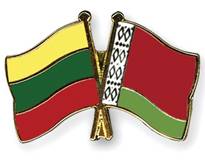
The quantity of Lithuanian visas issued to citizens of Belarus in the first half of 2011 has increased by 59% as compared to the analogous period of the last year.
It has been stated by the director of Foreign Ministry’s Consular Department Vytautas Pinkus at a session of an inter-institutional working group in Palanga on July 27, BelaPAN and the press-service of the Lithuanian Foreign Affairs agency report.
As said by Pinkus, the number of visas is mostly coinciding with tourists’ flows. “In 2010 the Lithuanian Embassy in Minsk and Consulate General in Hrodna together issued more than 107 thousand visas, and 77 thousand were issued just in the first half of this year,” reported the press service of Lithuanian MFA. In particular, in June 2011, compared with the same period in 2010, the number of visas issued by Lithuanian diplomatic representations in Belarus rose by 48%.
The inter-institutional working group was established by an order of the Foreign Minister Audronius Azubalis.
The group began its activities on 21 October 2010. In co-operation with the government and business partners, the working group makes decisions with regard to the enhancement of the procedures of visa issuance to tourists.
Source:
http://www.charter97.org
- Bookmark :
- Digg
- del.icio.us
- Stumbleupon
- Redit it
Chronicle of Lithuania – in a global perspective
- Posted by - (2) Comment
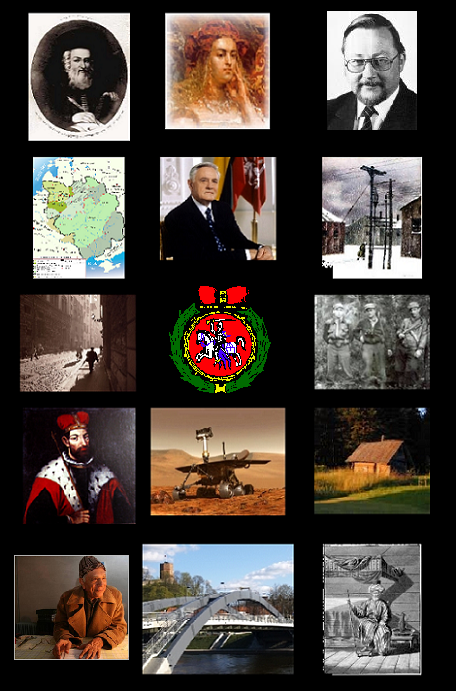
LITHUANIA - IN A GLOBAL PERSPECTIVE
A chronicle of historic and contemporary Lithuania and her relations to the world
See also: https://vilnews.com/?p=886
I have, over the years since I first came to Lithuania from my native Norway in 1990, often wondered why authorities or other institutions here haven’t published a chronicle describing the many ties and touching points this amazing country has to the rest of the world throughout historical and modern times.
Because Lithuania is a country that cannot be understood if you don’t know at least something about its exceptional past and its extraordinary ties with Italy, India, South Africa, Israel, Poland, Belarus, Ukraine, Crimea/Turkey, Sweden, Germany, Russia, Australia and America.
This was why I some years ago put together my own electronic ‘Chronicle of Lithuania in a global perspective’. that I often have used for presentations to guests and others with some interest in this little country that once was a ‘superpower’ of world class and for hundreds of years a thriving cradle for co-existence between people from many nations, cultures and religions. Or, as the British historian Norman Davies puts it: “Lithuania was a haven of tolerance”. Davies was not the only one who took notice of this. Erasmus of Rotterdam (1466 – 1536) is quoted as stating; “I congratulate this nation [Lithuania] which now, in sciences, jurisprudence, morals, and religion, and in all that separates us from barbarism, is so flourishing that it can rival the first and most glorious of nations.”
I know that foreign embassies and international companies, as well as many individuals, for many years have been using my ‘chronicle’ when they try to describe Lithuania to people and institutions in other countries, and I also urge you, dear readers, to pass on a link to this 'chronicle' to all your friends and acquaintances. That’s how we together can make Lithuania better known and understood for people around the globe...
Please keep in mind, however, that this is my personal collection of articles and impressions, not in chronological order, hence it might very well be that a historian would have chosen other articles and put together the information in a completely different manner. Nevertheless; have a good read. I believe afterwards you will agree with me that Lithuania is a truly amazing and far too little known spot on the world map!
Aage Myhre, Editor-in-Chief
aage.myhre@VilNews.com
TOPIC 1:
Lithuania’s peaceful fight for new freedom 1988-91
The little stroke that fell the great bear and opened for the new era of a united Europe
|
|
|
| Funeral of the victims of the 13 January 1991 Soviet attacks on Lithuania | Professor Vytautas Landsbergis, January 1991 |
"Lithuanians, do not resist, your government has deceived you. Go home to your families and children."
This was the repeated announcement from the Soviet military sound trucks rolling through the streets of Vilnius in January 1991. But luckily for Lithuania and for the new united Europe we today take more or less for granted, there was a music professor and a complete little nation supporting him that wanted it all differently. Hadn‘t it been for this peaceful fight for regained freedom against an occupation and a ruling the people of the Baltic States never wanted or agreed to, the map of Europe would most likely have looked very different today...
If there were those in the West who hadn’t heard about Lithuania before, they almost certainly had by the end of the day, January 13, 1991. That was the day Soviet troops cracked down in Vilnius and the resulting bloodshed made headlines around the world. The action was apparently a bid to stop Lithuania’s independence drive in its tracks. By the time the firing stopped and the smoke cleared, more than a dozen people lay dead, and hundreds more were injured. The crackdown, and particularly the killings at the TV tower, not only brought fame and sympathy to Lithuania from around the world, it was also a defining moment for Lithuanians themselves. The bloodshed meant they had crossed a point of no return. If there was ever any notion of reconciling with Moscow, it was now unthinkable. For those watching from abroad, Vytautas Landsbergis was the central player in the drama unfolding in Vilnius. The colourful, quick-tempered music professor became Lithuania’s president (or chairman of the Lithuanian Supreme Council) in 1990 and, from that time on, his name became almost synonymous with the Lithuanian independence movement. His blunt talk about breaking free of the Soviet Union and about Lithuania’s moral right to be able to do so startled observers in the West almost as much as it infuriated the Kremlin.
See also: https://vilnews.com/?p=3642
TOPIC 2:
South Africa, home to 70,000 Lithuanian Jews
Lithuanians dominate the Jewish community in South Africa to an extent seen in no other country, even their former home. "We have around 80,000 to 90,000 Jews in South Africa, and about 80 percent of them are of Baltic descent, most of them from Lithuania," said David Saks, an historian and researcher at the Jewish Board of Deputies in Johannesburg. "We probably have the most 'Lithuanian' Jewish community in the world," said Saks, whose own grandparents came from Lithuania. This ratio even exceeds that of Lithuania itself as most of the Baltic state's small Jewish community, now numbering a mere 5,000, is comprised mostly of immigrants who arrived from different parts of the Soviet Union after World War Two.The war devastated Lithuanian Jewry, once a leading centre of Jewish thought and culture. Historians estimate that 94 percent of the country's pre-war Jewish population of 220,000 perished in the Holocaust. The capital Vilnius, once known as the Jerusalem of the North, was home to a thriving community of 60,000 Jews, with more than 90 synagogues and the biggest Yiddish library in the world. Aside from one functioning synagogue, few traces of its rich Jewish past remain. "South Africa is more Litvak than Lithuania itself...we see our culture and society have been preserved there," said playwright and novelist Mark Zingeris, one of the few Litvaks remaining in Lithuania.
See also: https://vilnews.com/?p=1703
TOPIC 3:
Italy’s extraordinary, little known role in Lithuania
|
|
|
|
| Sigismund the Old | Bona Sforza | The Royal Palace – once again being rebuilt |
When Lithuania’s Grand Duke, Sigismund the Old in 1518 married the Italian Princess Bona Sforza, this became an outstanding manifestation of the already strong relationship between Italy and Lithuania. The royal couple created together an Italian community within the court and Italian culture became the preoccupation of the Vilnius city elite. Macheroni, skryliai, and even the confection marcipanus became staples among the cogniscenti and life at court became a series of cultural events, with rich noblemen competing for extravagance. During the rule of Sigismund the Old the palace was greatly expanded, to meet the new needs of the Grand Duke and Duchess. Another wing was added, as well as a third floor and the gardens were also extended. The palace reconstruction plan was probably prepared by Italian architect Bartolomeo Berrecci da Pontassieve.
The Royal Palace – that now again is being rebuilt – was remodelled by Bona Sforza and Sigismund the Old in Renaissance style. The plans were prepared by Italian architects, including Giovanni Cini da Siena, Bernardino de Gianotis Zanobi, and others. Among the many visitors to the Palace was Ippolito Aldobrandini, who later became Pope Clement VIII, also this emphasizing the extraordinary connections between Italy and Lithuania that lasted for hundreds of years – also giving background for the saying that ‘Vilnius is the world’s most Italian city outside Italy’. Throughout the Renaissance, when Italy was the leading trading centre and a melting pot for the world’s greatest civilizations, Vilnius also became a leading Renaissance centre of world class.
See also: https://vilnews.com/?p=2927 and https://vilnews.com/?p=1652
TOPIC 4:
The Lithuanian-Americans, a nation outside the nation
|
|
|
| Ex-President Valdas Adamkus is today’s most famous US-Lithuanian | Distribution of Lithuanian-Americans according to the 2000 census |
Many Lithuanians immigrated to the New World before the American Revolution. The first may have been a Lithuanian physician, Dr. Aleksandras Kursius, who is believed to have lived in New York as early as 1660. Most of the other Lithuanians who ventured to the Americas during this period were members of the noble class or practitioners of particular trades. But the first really significant wave of Lithuanian immigration to the United States began in the late 1860s, after the American Civil War. During the late nineteenth and early twentieth centuries, an estimated 300,000 Lithuanians journeyed to America. A flow that was later halted by the combined effects of World War I, the restriction of immigration into the United States and the achievement in 1918 of Lithuanian independence.
The second wave of immigration had a greater impact on U.S. census figures. Following World War II, a flood of displaced refugees fled west to escape the Russian reoccupation of Lithuania. Eventually 30,000 Dipukai (war refugees or displaced persons) settled in the United States, primarily in cities in the East and the Midwest. These immigrants included many trained and educated leaders and professionals who hoped to return someday to Lithuania. The heightening of tensions between the United States and the Soviet Union—known as the Cold War—dampened these expectations, and many Lithuanians sought to create a semi permanent life in the United States. By 1990 the U.S. Bureau of the Census listed 811,865 Americans claiming "Lithuanian" as a first or second ancestry.
The main areas of Lithuanian settlement in the United States included industrial towns of the Northeast, the larger cities of the Northeast and the Midwest, and the coal fields of Pennsylvania and southern Illinois. According to the 1930 census report, only about 13 percent of Lithuanians lived in rural areas, and even fewer—about two percent—were involved in agriculture. Nearly 20 percent of all Lithuanian immigrants settled in Chicago alone. Throughout the twentieth century, Lithuanian Americans began to climb up the economic ladder and gain an important place in their local communities. This mobility allowed them to enter the American mainstream.
Two important developments in Lithuania led to the growth of a strong Lithuanian American ethnic identity: the late nineteenth-century rise of Lithuanian national consciousness and the achievement of Lithuanian independence in 1918. Lithuanian Americans were staunch supporters of their newly independent homeland during the 1920s and 1930s, and some even returned to assist in the restructuring of the country's economy and government.
The post World War II wave of Lithuanian immigrants—the Dipukai—also experienced a surge of Lithuanian consciousness. These later immigrants saw themselves as an exiled community and clung to their memory of two decades of freedom in Lithuania. They developed an extensive network of schools, churches, and cultural institutions for the maintenance of Lithuanian identity in the United States.
See also:
https://vilnews.com/?p=2071
https://vilnews.com/?p=3798
https://vilnews.com/?p=766
https://vilnews.com/?p=2027
https://vilnews.com/?p=762
https://vilnews.com/?p=6704
TOPIC 5:
Lithuania and India - same language root and more…
|
|
Pictures: Aage Myhre |
It’s early morning in Delhi, India. I have been invited to the small, dark office of Professor Lokesh Chandra, one of India’s leading experts on Sanskrit and Buddhism. “The same year I was born, 1927, my father went to London to get a degree in Lithuanian language. He spoke the language fluently, but he never visited Lithuania”, tells the elderly professor, still with his Kashmir coat and cap on, despite the outside temperature of close to 300 Celsius. And I soon learn that the professor’s knowledge about the connections between Old Sanskrit and the Lithuanian language and ancient cultural ties between India and Lithuania is nothing but amazing.
It is a common belief that there is a close similarity between the Lithuanian and Sanskrit languages; Lithuanian being the European language grammatically closest to Sanskrit. It is not difficult to imagine the surprise of the scholarly world when they learned that even in their time somewhere on the Nemunas River lived a people who spoke a language as archaic in many of its forms as Sanskrit itself. Although it was not exactly true that a professor of Sanskrit could talk to Lithuanian farmers in their language, coincidences between these two languages were truly amazing, for example:
Sanskrit sunus - Lithuanian sunus; son Sanskrit viras - Lithuanian vyras; man
Sanskrit avis - Lithuanian avis; sheep Sanskrit dhumas - Lithuanian dumas; smoke
Sanskrit padas - Lithuanian padas; sole
We can assert that these Lihuanian words have not changed their forms for the last five thousand years!
Read also: https://vilnews.com/?p=4425 and https://vilnews.com/?p=4434
TOPIC 6:
Lithuania 1000 years in 2009!

In 2009, Lithuania celebrated its Millennium – as the name Lithuania was mentioned for the first time in 1009 in the Annales Quedlinburgenses books. Lithuania's name Lietuva is considered to have developed from the name of the 11-km long rivulet Lietauka. The area between the middle Nemunas and the Neris where Kernavė, Nemenčinė and Maišiagala now are is believed to have been the land called Lietuva. Duke Mindaugas was the ruler there, and the River Lietauka ran through that area and fell into the Neris upstream of the Šventoji. The Land of Lietuva (Lithuania) is supposed to have been named after the river, and the name was later extended to the State of Lithuania. Other sources indicate that the Land of Lietuva, was on the right bank of the Šventoji in the area between Anykščiai and Viešintai and prove their conclusion by the existence of the administrative unit, Vaitystė of Leitava, there.
"In 1009 St Bruno, who is called Boniface (Bonifatius), Archbishop and monk, in the second year of his conversion, on the border between Russia and Lithuania (Lituae), having been hit on the head by the pagans, and his 18 men went to heaven on the 23rd of February. "There are several sources that mention the event - the killing of the missionary but they refer to Prussia rather than Lithuania, which proves that both Germans and Poles did not know about the existence of Lithuanians then. They thought that Prussians were the only Balts (or the majority of Balts). Quedlinburg Annals mentioned Lithuania because they were keen on precision and the information was received from St Bruno's entourage. The story about St Bruno describes the political organisation of Lithuanians, which was peculiar and not characteristic of other Baltic tribes before the 13th century.
TOPIC 7:
Modern Lithuania in a new Europe
|
|
|
Lithuania has shown an impressive economic performance since its liberation from the USSR. “The Ballistic Baltic” and “The Baltic Tiger” are only two of the labels attached by foreign market observers to signify the speed and expected sustainability of this economic growth.
However, main restructuring based growth resources are coming to the end, which implies the need for search of new growth resources or decline of the growth cycle of the economy has as its vital economic interest to incentives and promote higher-quality high-tech industries, through R&D support, high-tech industry incubators, and appropriate educational focus.
The general strengths of Lithuanian national innovation system lies in the well developed and continuing its academic tradition higher education sector with strong science and technology research tradition and engineering orientation.
This results in a relatively high share of the population with tertiary education, high numbers of S&T graduates among them, and cultural orientation of the younger generation towards higher education. However, restricted resources for R&D and the higher education sector combined with the growing numbers of students at all higher education levels doubts the quality of education, especially in areas where technological based education is significantly important. Also low or non existing investments of businesses in vocational training lead to obsolete qualifications not suitable for high tech high skill work. The weak links between business and higher education and R&D communities result not only in obsolescing qualifications of the highly educated labour force, but also in low value added innovations, developed without input from the R&D sector.
TOPIC 8:
Karaims and Tatars - Turkish nationalities in Lithuania
|
|
|
| Typical Karaim house in Trakai, 30 km from Vilnius city | A senior Tatar Muslim cleric (akhund) |
Since the 14th Century two Turkish nationalities – Tatars and Karaims – have been living in Lithuania. From linguistic and ethno genetic points of view they belong to the oldest Turkish tribes - Kipchaks. This ethnonym (Kipchak) for the first time was mentioned in historical chronicles of Central Asia in the 1st millennium BC. Anthropologically ancient Kipchaks were very close to Siberia inhabitants Dinlins, who lived on both sides of the Sajan Mountains in Tuva and the northern part of Gob. In 5th century BC Kipchaks lived in the West of Mongolia, in 3rd century BC they were conquered by Huns. Since the 6 - 8 centuries, when the first nomadic Turkish empires were founded, the Kipchak’s fate is closely connected with the history and migration of the Middle Asia tribes. In Turkish literature they are known as Kipchaks. The history of Karaims is connected with Lithuania since 1397-1398. According to the tradition, The Great Duke of Lithuania Vytautas, after one of the marches to the Golden Horde steppes, had to bring from the Crimea several hundred Karaims and settle them in the Great Duchy of Lithuania. Transference of several hundred Karaim families and several thousand Tatars was not done once. It was in connection with the state policy of The Great Duchy to inhabit the empty areas, build towns and castles and to develop trade and economic life. Initially, Karaims were settled in Trakai between the two castles of The Great Duke, present Karaim Street. Later they were found living in Biržai, Naujamiestis, Pasvalys and Panevėžys. However, Trakai has always been the community's administrative and spiritual centre for Karaims in Lithuania, nowadays more and more also for Karaims throughout the world.
See also: https://vilnews.com/?p=2942
TOPIC 9:
Lithuania 500 years ago was Europe’s largest country
|
|
|
| Vytautas the Great (1350-1430) | The Grand Duchy of Lithuania, 13-16 centuries (marked green) |
“Lithuania was a superpower much longer than USA has been“. This is how I often tease my American friends arriving in Vilnius. But the teasing is in fact not so far away from reality, as the Grand Duchy of Lithuania (GDL) for 300 years was one of the leading and largest nations of the World, stretching from the Baltic Sea to the Black Sea.
It all started with King Mindaugas (1203-1263), Lithuania‘s first and only king, who in 1236 defeated the Livonian Brothers of the Sword and united the different Lithuanian tribes under his reign. But the real expansion began when Grand Duke Gediminas (1275 – 1341) came to power in 1316, and started a new dynasty of leaders. Gediminas employed several forms of statesmanship to expand and strengthen the GDL. He invited members of religious orders to come to the Grand Duchy, announced his loyalty to the Pope and to his neighbouring Catholic countries and made political allies with dukes in Russia as well as with the Poles through marriage to women in his family. Gediminas’ political skills are revealed in a series of letters written to Rome and nearby cities. He makes mention of the Franciscan and Dominican monks who had come to the GDL by invitation and were given the rights to preach, baptise and perform other religious services. He also included an open invitation to artisans and farmers to come and live in the GDL, promising support and reduced taxes to those who would come. Under Vytautas the Great (1350-1430), Lithuania‘s military and economy grew even stronger, and he was the one expanding the Grand Duchy‘s frontiers south to the Black Sea. The Grand Duchy was at its largest by the middle of the 15th Century. It existed in the very centre of Europe and comprised the entire territories of contemporary Lithuania, Belarus, Ukraine, a part of Poland and stretched from the Baltic Sea to the Black Sea. Both Belarus and Ukraine point back to the days when they were part of the thriving GDL as proof of their cultural and political distinction from Russia. Successfully ruled by a dynastic line of dukes, the Grand Duchy of Lithuania (GDL) developed a highly advanced system of state administration and stove off invading Crusaders longer than any other Central European power. Its statesmen conducted effective foreign policy and military campaigns and created a multi-ethnic state. Though officially ended in 1795, the history of the GDL continues to influence modern-day nationalist thinking in the region. Not only Lithuania but also Belarus and Ukraine remember the days when they were part of the thriving GDL as proof of their cultural and political strength clearly distinguishing them from Russia.
By the way, Grand Duke Gediminas (1275 – 1341) is my personal favourite among all the Lithuanian nobles, and in my opinion, he was one of the greatest rulers of medieval Europe. He was a man of extraordinary knowledge and wisdom, understanding the importance and advantage of having a multicultural society as the foundation for his new city, more cleverly than most world rulers during the centuries after him. In October 1323, for example, representatives of the archbishop of Riga, the bishop of Dorpat, the king of Denmark, the Dominican and Franciscan orders, and the Grand Master of the Teutonic Order assembled in Vilnius when Gediminas confirmed his promises and undertook to be baptized as soon as the papal legates arrived. A compact was then signed in Vilnius, in the name of the whole Christian World, between Gediminas and the delegates, confirming the promised privileges. Fifteen months later, on the 25th of January 1325, Gediminas issued circular letters to the principal Hansa towns in Europe offering a free access into his domains to men of every order and profession from nobles and knights to tillers of the soil. The immigrants were to choose their own settlements and be governed by their own laws. After Gediminas, Vilnius emerged over hundreds of years, expanding, changing, and embodying the creative imagination and experience of many generations of architects and builders from Lithuania and abroad. Under the care of generous and perceptive benefactors, it became a city rich in architectural treasures and urban harmony.
See also: https://vilnews.com/?p=326
TOPIC 10:
Lithuania’s new international role – a bridge at the crossroads of east-west-south-north
|
|
|
Today Lithuania is in a unique position to continue and expand its role as a significant transportation hub and meeting point for many neighbouring regions. Lithuania serves as a natural bridge for East - West (Europe-Asia) traffic with transport connections to the Trans-Siberian rail route and direct links with Russia and other countries of the former Soviet Union, as well as rapidly growing Baltic countries and even East Asia, including China. Nearly half or 45% of Russia’s total foreign trade passes through the Baltic Sea ports. A major advantage of Lithuania lies in its strategic location at the crossroads between Eastern and Western Europe as well as the Baltic Sea region. Lithuania has for centuries been on an important trade route, linking the Baltic Sea Region to the Black Sea. Klaipeda, the country’s sea coast city, has moved from having been an important port city in the Hanseatic League of trading cities around the Baltic and North Sea since the 13th century, to becoming a modern logistic hub for trade and transport between Western and Eastern Europe. Its unfrozen port is the best transportation centre between the east and west. Vilnius, the capital of Lithuania, is together with the country‘s second largest city, Kaunas, developing into a huge metropolis, showing all the potential of becoming a significant commercial, financial and transportation centre for the Baltic Sea region and Northern Europe. Traditions and experience gained during many centuries and historically strong presence of people from many nations and backgrounds are important for conducting economic relations nowadays. In addition, Lithuania is located in one of the most dynamic and competitive areas of the world representing 10 metropolitan areas with over 90 million inhabitants and being the home to well-established companies and product brands and the leading IT and telecom producing area of Europe with the highest cellular telephone penetration in the world.
TOPIC 11:
For hundreds of years Lithuania was the home-country to amazingly thriving Jewish communities
Napoleon Bonaparte was the one who started calling Vilnius ‘Jerusalem of the North’, when he arrived here in June 1812. It was the first and only "Jewish city" Napoleon would ever see. It is said that he became very surprised on what met him in Vilnius, a city so far away from the European mainstreams and still with a lively Mediterranean mood and life. And true enough, the history of the Litvaks, as the Lithuanian Jews are called, is unusual and surprising. It was a history of mostly peaceful coexistence with other peoples and cultures that lasted for more than six centuries. It was a history that spawned an incredible number of eminent Jews. The "Golden Age of Jewry" in Lithuania started with Grand Duke Gediminas (1275-1341), the empire builder who took a liking to foreigners and Jews whose skills and education were badly needed in medieval Lithuania. In the early 1300's he attracted them to his realm with numerous perks, including guarantees of religious freedom and tax exemptions. The Jews of Europe responded in droves, and Vilnius became the heralded centre of Jewish culture and learning. There would be synagogues, schools, theatres, publishing houses and the Yiddish Institute of Higher Learning. At a time when others in Europe were effectively illiterate, all the Jews in Vilnius could read and write. This was so unusual that it provoked the invention of a brand-new word, "Vilner," meaning "an educated man with knowledge." For almost 700 years, the Litvaks became an inseparable part of Lithuanian society, having enriched the country’s economy, culture, science, and education. During the Second World War, about 200,000 (95%), Lithuanian Jews were murdered. This was the greatest loss in all of Eastern and Central Europe. The Nazi Holocaust led to an almost complete extermination of Lithuania’s Jews, and also the destruction of their history and cultural monuments - a most tragic page of Lithuanian history.
See also: https://vilnews.com/?page_id=152
TOPIC 12:
Poland and Lithuania – an intertwined relationship
 |
|
|
|
Poland and Lithuania have an exceptionally intertwined history since the Middle Ages and, unfortunately - so much has divided and remained problematic between these two close neighbours. But maybe the time now has come to focus on what unites? Maybe it’s time to study the example of the famous writer Czeslaw Milosz?
Nobel Price Winner Czesław Miłosz was born June 30, 1911 in Szetejnie, Lithuania. He spent his youth in Vilnius. During his law studies at Stefan Batory University in Vilnius he created a poets' group called Żagary. He published his first volume of poetry, A Poem in Frozen Time, in 1933. During the German occupation, Miłosz participated in Warsaw's underground cultural life, even publishing a volume of poetry called Invincible Song.
In 1960 Miłosz moved to the United States, where he became a professor at Berkeley University's department of Slavic literature. Throughout this period, Miłosz mainly published his works in Paris and the United States. Initially he specialized in writing essays but he gradually became a well-known poet. His fame was confirmed by the Neustadt International Prize for Literature and being crowned with the Nobel Prize. In Poland his works were largely absent from the official press, only published occasionally in collective anthologies. Only following his Nobel Prize were Miłosz's poems officially published and only then was he allowed to return to Poland. Miłosz died in 2004, at his home in Kraków, aged 93. His first wife, Janina, had died in 1986; and his second wife, Carol, a U.S.-born historian, in 2002.
TOPIC 13:
600,000 persons from the Baltic States were deported to Siberia during the period 1940-53
|
|
|
| Lithuanians in Molotkov, Siberia (unknown year) | Former President of Lithuania, Aleksandras Stulginskis, was one of the many deportees |
The saddest period in the history of Lithuania began in August 1939, when Hitler and Stalin concluded their agreement that divided up Central Europe. After the outbreak of the Second World War, Lithuania was occupied three times: first by the USSR in 1940, then by Nazi Germany in 1941, and finally by the USSR again in 1944. During the Nazi and Soviet occupations, including 200,000 Holocaust victims, the losses of the population of Lithuania amounted to 33 percent of the total number of the country's population in 1940. Lithuania lost 1 million people to deportations, executions, incarceration, murder of political opposition and forced emigration. Altogether, some 600,000 prisoners were taken from the Soviet occupied Baltic States - Lithuania, Latvia, and Estonia. There were some 10 million inhabitants in all three Baltic States on the eve of the Soviet occupation. Proportionately, the number of Baltic prisoners would be equal to a loss of 20 million in the United States or 5 million in Great Britain. During 1940-1953, some 132,000 Lithuanians were deported to remote areas of the USSR: Siberia, the Arctic Circle zone and Central Asia. They were not allowed to leave remote villages. More than 70 percent of the deportees were women and children. Some 50,000 of the deportees were not able to return to Lithuania. During the same period, another 200,000 people were thrown into prisons. Some 150,000 of them were sent to the Gulags, the USSR‘s concentration camps, situated mostly in Siberia.
See also:
https://vilnews.com/?p=335
https://vilnews.com/?p=2168
https://vilnews.com/?p=6539
TOPIC 14:
The Lithuanian partisan war 1944-53 was the longest and bloodiest guerrilla war of modern Europe
Despite the heroics of the Lithuanian partisans, or Forest Brothers as they became known, they were doomed to failure because it was a fight that was ignored by the West. Their war became known as the ‘unknown’ or ‘hidden’ war. Altogether 22,000 Lithuanian partisans and their supporters lost their lives in the struggle against the Soviet and NKVD (later to become the KGB) forces. The war continued until 1953, though the last resistance fighter refused to surrender and shot himself in 1965 and another partisan finally came out of hiding in 1986. “The Lithuanians had to choose from three options: to emigrate, stay in Lithuania and suffer the oppression and humiliation, or go into a forest to defend their Fatherland,” said Albinas Kentra, chairman of the Lithuanian Forest Brothers Union. The basic goal of the guerrilla warfare was aimed at the re-establishment of Lithuanian Sovereignty. Thousands of men gathered in the forests in the hope that they would not have to hold out for long – only until the Peace Conference decided to implement the principle of national self-determination.
See also:
https://vilnews.com/?p=5391
https://vilnews.com/?page_id=131&paged=2
TOPIC 15:
Lithuania – a land of unspoilt nature, an example for countries around the world
|
|
|
|
Nature is everywhere in Lithuania. Even the approaches to Vilnius are surrounded by forests, and every spring, a woodland grouse, the capercaillie one of the rarest birds, carries out its mating rituals just 20 kilometres from the town centre in an old pine forest which has been preserved for it.
It would be difficult today to identify the beginning of the environmental tradition in Lithuania. Perhaps we could look for it in the statutes of the 16th century, the key state legal documents. Perhaps it started even earlier, in the sacred oak groves that could be damaged only by the winds and storms, but never by man. The first nature reserve, at Žuvintas, was founded 70 years ago. There, everything is left to nature. No man’s foot can step in it. Birds and animals there may feel that their nests and offspring are safe. Today the network of protected areas covers 12 per cent of the country, including five national parks, four sanctuaries, 30 regional parks and multiple reserves.
Every ancient tree, or rock in an interesting shape and form of relief, is protected.
TOPIC 16:
Lithuania on Mars
Lithuania was once known as the Soviet Silicon Valley, and also today the country has a very strong research and development sector. Lithuanian world-class specialists cooperate with NASA, NATO, Volvo, Saab, Philips, and many others in the fields of biotechnology, biochemistry, laser optics, chemistry, physics, etc.
According to Paris‘ “Le Monde”, Lithuania is the biggest exporter of femtosecond lasers in the world. Among the clients is NASA, i.e. using Lithuanian laser technology for analyses of minerals on Mars! A country of 3.5 million people, Lithuania, has about 15 laser producers, employing about 300 laser specialists, half of which are engineers and doctors of sciences. Lithuania’s laser sector grows about 15-20 % annualy, which is twice faster than the whole economy of the country. Lithuanian laser production is demanded by the best scientific laboratories in Europe and the US.
Lithuania has six science and technology parks which develop favourable infrastructure for the establishment of new innovative businesses in Lithuania and encourage the growth of existing ones engaged in the development of innovative technologies. Lithuania’s science and technology parks seek to provide a comfortable environment for commercializing R&D activities and integrating business, science, and research by supporting knowledge transfers leading to the exploitation of research results and to the development of marketable products and services. According to the 7 Economist Intelligence Unit (EIU) in 2006, Lithuania demonstrated an advanced e-business environment. Lithuania was acknowledged as one of the emerging markets where mobile phone penetration is several times that of fixed lines. This, plus a rapid increase in the number of WiFi hotspots in its capital and other cities, has helped improve overall connectivity for its consumers and businesses. In Lithuania, e-banking, e-government services and mobile internet are being used in everyday business and life and are becoming increasingly popular.
“Lithuanian scientists are likely to become leaders in certain spheres of world science.” (Achilleas Mitsos, Director General of the European Commission’s Directorate General for Research).
- Bookmark :
- Digg
- del.icio.us
- Stumbleupon
- Redit it
- Posted by - (4) Comment
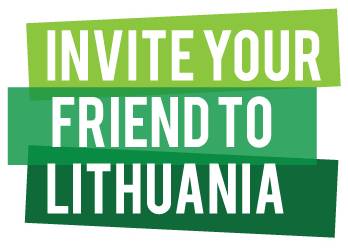
A new campaign is born! The campaign is called ‘Invite Your Friend to Lithuania’, already receiving good support from service businesses all over the country and abroad. Those who invite friends to Lithuania can even win free flights to Vilnius, Kaunas or Palanga, visit various events free of charge, get souvenirs and receive discounts different places.
People are invited to join the initiative at www.invite2lithuania.com or at the initiative’s Facebook Page where we all are encouraged to invite our friends and acquaintances to Lithuania.
The campaign seeks to invite a record number of people to visit Lithuania in 2011-2012 through Lithuanians and friends of Lithuania all around the world. The Campaign is organized by ‘Global Lithuanian Leaders’ (GLL) - a network that unites talented professionals and leaders who associate themselves with Lithuania and contribute to the continued economic, political, social and cultural transformations currently underway in Lithuania.
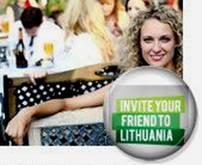
Dalia Venslovaitė
Dalia Venslovaitė, Director at GLL tells that ‘This year Lithuania has already welcomed a record number of visitors. Our goal is that people who have already visited and enjoyed Lithuania would invite others through their social networks. Moreover, we focus much on Lithuanians living abroad. They are our best ambassadors in revealing why it is worthwhile visiting Lithuania‘.
According to the Lithuanian State Department of Tourism under the Ministry of Economy, during the first quarter of 2011 there was a 39.4 % increase in tourism in Lithuania comparing to the previous year. During the latest quarter Lithuania has welcomed 150 000 tourists while the total number of tourists last year was 107 000. One tourist spends around 1.040 LTL daily. Last year an average stay of one tourist in Lithuania was 4.3 nights. Hence, one tourist alone brings around 600 LTL directly into the state budget.
- Bookmark :
- Digg
- del.icio.us
- Stumbleupon
- Redit it

PHOTO: http://www.migracija.lt
On 1 January 20111, the population of the EU27 was estimated at 502.5 million, compared with 501.1 million on 1 January 2010. The population of the EU27 grew by 1.4 million in 2010, an annual rate of +2.7 per 1000 inhabitants, due to a natural increase of 0.5 million (+1.0‰) and net migration of 0.9 million (+1.7‰).
These figures come from a report published by Eurostat, the statistical office of the European Union.
In 2010, over 60% of the increase in the EU27 population came from migration. In relative terms, Luxembourg (+15.1‰), Malta (+5.4‰), Sweden (+5.3‰).
Italy (+5.2‰) and Belgium (+5.1‰) had the largest net inflows.
Lithuania (-23.7‰) and Ireland (-7.5‰) recorded the highest net outflows.
Crude rates of population change (per 1000 population)
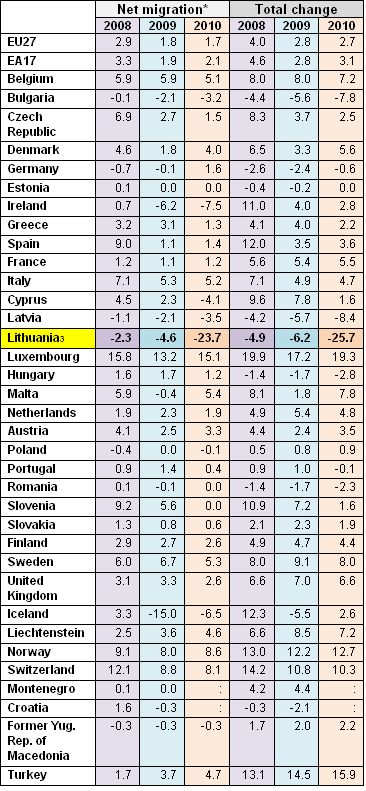
* Including the statistical adjustment that corresponds to all changes in the population that cannot be classified as births, deaths, immigration or emigration.
3. Due to administrative reasons, the relatively high net migration in Lithuania in 2010 may include emigration that took place over previous years.
Eurostat news releases on the Internet: http://ec.europa.eu/eurostat
- Bookmark :
- Digg
- del.icio.us
- Stumbleupon
- Redit it
Vilnius Airport has ambitious expansion plans
- Posted by - (0) Comment

Vilnius Airport’s terminal building from 1954 was built during Stalin’s last years and still remains the airport’s main face towards Vilnius City.
Vilnius International Airport targets leading position in the Baltic region, The Lithuania Tribune reports referring to an article published in lrt.lt this week.
The Lithuanian Ministry of Transport and Communications states that the Vilnius International Airport is open to any particular candidate to assume the position as the national air carrier, and those wanting to initiate the activity are becoming increasingly selective, informs LETA/ELTA.
"Currently competition between airports is based not simply upon lowering taxes, but the amount of revenue accorded to the airlines. This system is employed by a significant portion of EU's regional airports, which are excluded from the list of major airports. Examples of this may include Kaunas International Airport", Deputy Minister of Transport Rimvydas Vastakas said.
Vilnius Airport has overcome a lengthy recession and secured almost all of the most attractive destinations by reducing its service fees to the lowest rates in the region, thereby admitting low-cost carriers such as Ryanair and Wizair.
"This is the third month, we are growing at not less than 30 percent, and all airlines, both low cost and traditional, show healthy results in growth", the Vilnius International Airport Director Tomas Vaisvila said.
Vilnius International Airport aims to serve almost two million passengers (about as much as before the downturn) this year and to operate without a loss in the following year. Within five years it is hoping to become the region’s major airport.
"If we keep moving at the current rate, with adequate promotion and growth in purchasing power, in a 5-year period we can become very strong", the Deputy Minister of Transport believes.
According to a representative of the company, which has possessed the major share of the Vilnius airport market for five years, the airport will not become the region's leader without transit passengers. And the possibility of transit passengers requires a national carrier.
"Without transit passengers, Vilnius airport cannot become a regional centre. This has been the eternal problem of the airport. The base carrier, should it be [the Latvian national airline] airBaltic, or someone else, could establish a transit hub. Because now, if there’s less than 51% of Lithuanian capital, aircraft with the Lithuanian flag cannot enter the most Eastern countries", airBaltic Executive Vice-President T. Vizgirda said.
Lithuanian air transport strategists say they can also achieve the desired goal by developing an open market.
As reported, in the current situation, there is no real possibility of moving Latvian national airline to the Lithuanian capital Vilnius at the moment, because this airport cannot ensure the necessary technical equipment and passenger flows, the chairman of the Latvian Federation Trade Unions of Civil Aviation Vladimirs Golakovssaid.
''This step, for any company, would be the final option, especially in the aviation industry, where prolonged stoppage leads to staff losing their professional qualifications, and to renew this, much time and finances has to be invested,'' Golakovs added.
The Latvian state has received an offer from airBaltic's private minority shareholder Baltijas Aviacijas Sistemes(BAS) to alter the airBaltic shareholders agreement and move the airline's head office to Vilnius.
Transport Minister Uldis Augulis (Union of Greens and Farmers) previously stressed that the state did not support this proposal, and believes that the airBaltic hub must remain in Riga.
- Bookmark :
- Digg
- del.icio.us
- Stumbleupon
- Redit it
- Posted by - (1) Comment
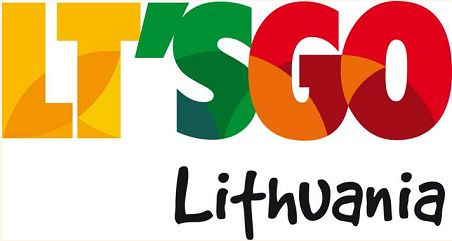
THE GREAT NARRATIVE OF LITHUANIA
(An Odyssey of Hope)
LIETUVIŠKA STRATEGIJA 21 A. LIETUVAI
(Vilties Odisėja)
Terms of Work
REBUILDING LITHUANIA ON THE ROCK OF ITS HISTORY, CULTURE, AND FAITH
A TRIBUTE TO THOSE WHO’S BLOOD AND BRAINS MADE FREE LITHUANIA POSSIBLE
Valdas Samonis
Institute for New Economic Thinking, USA
SEMI Online, Globally
SEMI Online
Punskas-Vilnius-Toronto-New York
Copyright by Valdas Samonis & SEMI Online 2011.
I started my research, thinking, and other work on Lithuania during my first high school years in Punskas, Poland, in the mid 1960s prior to my arrest, expulsion from school, as well as my long-term persecution and harassment by the communist security services for my anti-Soviet and freedom-to-Lithuania activities. Since that time, I encountered many people globally to whom I owe a lot of great inspiration and enlightenment in connection with this work, for details please see the Acknowledgements section below.
ABSTRACT. After the period of the development-retarding Soviet occupation and a frantic/chaotic search for systemic solutions in the 1988-2010 freedom-seeking, Lithuania badly needs a fresh and original approach to its socioeconomic system and its due place in the new global economy. This fresh approach, the innovative Great Narrative of Lithuania (GNL) is a qualitatively new global presentation of Lithuania; GNL will use modern economic and management theories and will be rooted in the original and unique overall Lithuanian experience assessed against the background of the world’s (esp. European) experience.
With stagflation, gyrating financial imbalances, recurring asset price bubbles, primarily in the advanced economies but also in emerging markets, there is a rapidly growing need to learn from past crises and attempts at transformations in order to boost the necessary confidence (find a new hope) and to avert or minimize new crises using the most modern knowledge management approaches, innovate in business/economic models and critical areas of institutional/systemic solutions. This is of importance globally and specifically for Lithuania as it moves away from its attempts at traditional comparative and competitive advantages to “softer” aspects of more advanced development involving new sources of those advantages and new institutions/systemic solutions that probably will be a creative blend of the Scandinavian, some Anglo-Saxon (e.g. Canada), and even Asian models (e.g. Singapore, China).
THE GREAT NARRATIVE OF LITHUANIA
REBUILDING LITHUANIA ON THE ROCK OF ITS HISTORY, CULTURE, AND FAITH
STAGES OF WORK: e-books, e-portfolios, e-cases, internet portals, modern presentations/papers, books, etc
INTRO
ECONOMIC RECOVERY OF LITHUANIA IN THE LIGHT OF THE LATEST THEORIES: Lessons from the Great Recession 2007-10 and Global Transformations;
THE MAIN BODY OF WORK
LESSONS FROM THE DEVELOPMENT HISTORY
Falling Behind: Retarding and Distorting Effects of the Soviet Occupation
Attempts at Traditional Catch-Up in Lithuanian Development 1989-2010
Demographic Change of Lithuania: A Modern Interpretation of the Destiny
The Crucial Issue of Governance in the 21st C Societies; Lessons for Lithuania
LATECOMER’S ADVANTAGE: COMPETITIVE AND COMPARATIVE ADVANTAGES OF LITHUANIA IN THE NEW GLOBAL ECONOMY, A Modern Knowledge Management Approach;
PRESENTING MODERN LITHUANIA TO THE WORLD: The Great Narrative of Lithuania;
VOX POPULI-VOX DEI: THE VIRTUAL INTERACTIVE THINK TANK FOR LITHUANIA, A Modern Digital Collaboration for Permanent Wisdom Sourcing (from Lithuania, Diaspora, and other FOLK: Friends of Lithuania of all Kinds);
NEW HOPE: NEW LITHUANIAN POLICY PARADIGMS: Scandinavian and Global Orientations.
ACKNOWLEDGEMENTS
REFERENCES
- Bookmark :
- Digg
- del.icio.us
- Stumbleupon
- Redit it
- Posted by - (0) Comment
Foreign Minister Ažubalis:
“Sweden is a guarantor for Lithuanian energy security”
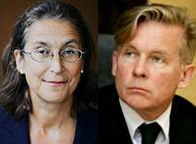
Outgoing Ambassador of Sweden to Lithuania Ulrika Cronenberg-Mossberg and Lithuanian Minister of Foreign Affairs Audronius Ažubalis
On 27 July in Vilnius, Lithuanian Minister of Foreign Affairs Audronius Ažubalis and outgoing Ambassador of Sweden to Lithuania Ulrika Cronenberg-Mossberg discussed intensive bilateral relations’ agenda, economic cooperation and the exclusive role of Sweden in Lithuania’s path towards energy independence.
“Sweden, as our link to the European energy system, is one of Lithuania’s guarantors for energy security. I am glad that the NordBalt is being implemented according to the plan. We also hope for Sweden’s attention and cooperation as Lithuania is constructing the new Nuclear Power Plant,” A.Ažubalis said during the meeting.
He thanked the Ambassador for her efforts to maintain close alliance between Lithuania and Sweden, and also close fellowship. The Minister voiced confidence that friendly relations between the two countries would continue to develop just as intensively in the future.
A.Ažubalis described Sweden as one of the stabilizing factors during the economic crisis. According to the Minister, today this country remains one of the most important trade partners and investors in Lithuania.
“Recently, we have turned a new page of regional cooperation of the Nordic Baltic Eight (NB8) and of the European Union’s Strategy for the Baltic Sea Region, where Lithuania and Sweden are implementing many joint projects,” the Minister said.
The Swedish Ambassador to Lithuania began her tenure in 2008.
- Bookmark :
- Digg
- del.icio.us
- Stumbleupon
- Redit it
![]()

Protests outside the Austrian Embassy in Vilnius.
Photo: EPA
The international association of veterans of the Alpha Group counter-terrorist unit has asked the Russian President in an open letter to defend their colleague Mikhail Golovatov, whom Lithuania suspects of involvement in the firing on a demonstration in Vilnius.
The authors of the letter point out that Lithuania’s political forces are staging provocations against Alpha Group veterans to settle their home problems through a search for an enemy from without.
Golovatov was arrested in Austria on July 14th on a Lithuania arrest warrant. He returned to Moscow two days later since the Austrian police had no charge to bring against him.
Soviet troops were sent to Vilnius in January 1991 after Lithuania proclaimed independence from the Soviet Union. 14 people died in the clashes that followed.
- Bookmark :
- Digg
- del.icio.us
- Stumbleupon
- Redit it
Why a row over Austria’s release of a Soviet commander is more than a dusty historical question
- Posted by - (0) Comment
![]()

Soviet tanks attacking the people of Lithuania, January 1991.
Who bears responsibility now for the crimes of the Soviet past? This is the real question behind the continuing row over Mikhail Golovatov, a former Soviet special-forces commander briefly arrested at Vienna airport on 14 July. In one sense, the argument is about the European Arrest Warrant issued by Lithuania. Was it properly drafted? Can it apply to the events of January 1991, when Soviet troops under Golovatov's command killed 14 pro-independence demonstrators in Vilnius? Did Austria give Lithuania the correct amount of time to remedy any deficiencies in the original warrant's wording?
At another level, the question is about Russia's clout in the EU. Is it really true, as the Austrian Green parliamentarian Peter Pilz claims, that his country's senior officials met on the morning of 15 July and resolved to send Golovatov back to Russia forthwith, and to concoct an excuse based on Lithuanian bureaucrats' bad drafting? Does Austria's closeness to Russia, based on favourable dealings in gas supplies, and the Viennese banks' cosy ties to big Russian customers, explain its cold-shouldering of a fellow EU member?
A third question is about Lithuania's effectiveness of response.
Read more at:
http://www.europeanvoice.com/article/imported/an-arrest-that-highlights-tensions-and-ties-with-russia-/71751.aspx
- Bookmark :
- Digg
- del.icio.us
- Stumbleupon
- Redit it
Sale of motor vehicles up 24.6%
- Posted by - (0) Comment
![]()

Statistics Lithuania informs that, based on the preliminary results of the survey of trade and catering enterprises, the turnover of retail trade, wholesale and retail trade and repair of motor vehicles and motorcycles enterprises (VAT excluded) in June 2011 amounted to LTL 2713.4 million (in 2010, LTL 2158.8 million) and, against May, increased by 0.8 per cent at constant prices (in June 2010, against May, the turnover had increased by 0.4 per cent).
Over a month (in June 2011, against May), the retail trade turnover, except for trade in motor vehicles and motorcycles, grew by 0.8 per cent at constant prices. The turnover of enterprises trading in food products grew by 2.4 per cent, that of enterprises trading in non-food products (motor vehicles excluded) dropped by 4.3 per cent at constant prices.
The turnover of enterprises trading in automotive fuel in June 2011, against May, grew by 8.2 per cent at constant prices.
The turnover of enterprises engaged in the wholesale and retail trade and repair of motor vehicles and motorcycles in June 2011, against May, grew by 0.8 per cent at constant prices.
The turnover of catering and beverage service enterprises (VAT excluded) in June 2011 amounted to LTL 76.5 million (in 2010, LTL 64.5 million) and, against May, decreased by 3.4 per cent at constant prices (in June 2010, against May, the turnover had dropped by 5.1 per cent).
- Bookmark :
- Digg
- del.icio.us
- Stumbleupon
- Redit it
Changes in turnover
- Posted by - (0) Comment
![]() (VAT excluded)
(VAT excluded)
At constant prices, growth, drop (–), per cent

- Bookmark :
- Digg
- del.icio.us
- Stumbleupon
- Redit it
- Posted by - (1) Comment

|
Klaipeda was substantially covered in our VilNews editions |
|
Sunday 17 July |
||
|
KLAIPĖDA – the jewel in the amber crown |
Friedricho Pasažas – the new wonder of Klaipėda |
|
|
History of Klaipėda
|
Mare Suebicum |
|
|
Monday 18 July |
||
|
KLAIPĖDA MAYOR:
|
Radisson Blu Hotel, Klaipėda:
|
|
|
Tuesday 19 July |
||
|
Western Shipyard – from Soviet colossus to European greatness
|
Lido Marine – a Norwegian success story in Klaipėda
|
|
|
Wednesday 20 July |
||
|
KLAIPĖDA FREE ECONOMIC ZONE:
|
Next time you eat bacalao* in Spain or Italy |
|
|
Thursday 21 July |
||
|
Klaipedos Nafta has one of the most up-to-date oil terminals in Europe
|
The port of Klaipeda
|
|
|
WITH BOTH OIL AND LNG IN KLAIPĖDA:
|
||
|
Friday 22 July |
||
|
MEMEL CITY – A NEW 'CITY' AT KLAIPEDA'S SEA FRONT
|
4 trucks full of books every week
|
|
|
Saturday 23 July |
||
|
JAMES ANDREW CLARKE:
Click here to read the article
|
KLAIPĖDA SCIENCE And TECHNOLOGY PARK:
|
|
|
Sunday 24 July |
||
|
From Suriname to Klaipėda International Business Club
|
Klaipėda – a pioneer municipality in combating violence against women
|
|
- Bookmark :
- Digg
- del.icio.us
- Stumbleupon
- Redit it
- Posted by - (0) Comment
Lithuania, Israel seek to launch direct flight Tel Aviv – Vilnius
![]()
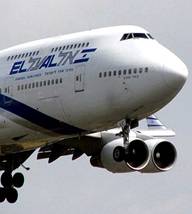
VILNIUS, BNS – Lithuania could become a center of tourism services, with Israel organizing direct flights as far as the United States, Israel's Tourism Minister Stas Misezhnikov said in Vilnius some days ago.
The objective of opening direct flights between Vilnius and Tel Aviv was high on the agenda of the Israeli minister's meeting Lithuania's Economy Minister Rimantas Zylius, the Economy Ministry said.
"We discussed the instruments for supporting the commercial interest for financial interest of flights between Vilnius and Tel Aviv, keeping airplanes full and tourists happy,” Zylius said after the meeting.
In Misezhnikov's words, contacts should first of all be made between travel organizers in both states to make them feel the commercial interest in promoting travel routes to Lithuania and Israel. He also proposed promoting city tourism, so-called city breaks, especially for young people who like weekend trips to European capitals. Misezhnikov said Israel's small businessmen could look into rural tourism development opportunities in Lithuania.
In 2010, about 10,000 Israeli tourists came to Lithuania and spend about 5 million euros here. Israel is one of Lithuania's priority tourism markets.
The two countries last year signed an agreement on tourism cooperation.
- Bookmark :
- Digg
- del.icio.us
- Stumbleupon
- Redit it
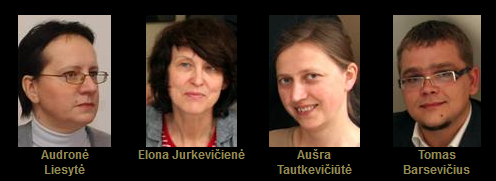
The Klaipeda Municipality tem planning the new crisis centre for women:
Ms. Audronė Liesytė, Head of Social Care Division
Ms. Elona Jurkevičienė, Head of Project Division
Ms. Aušra Tautkevičiūtė, Chief Specialist of Construction and Infrastructure Development Division
Mr. Tomas Barsevičius, Chief Specialist of Project Management Subdivision, Project Division
One of the biggest problems that Lithuania faces today is violence against women. Statistics claims that 63% of all women in Lithuania suffered from physical and/or psychological violence, whereas world average is 33%. In my interview with Klaipeda’s Mayor Vytautas Grubliauskas earlier this week, I asked him if he thought Klaipeda could be a good example for other Lithuanian municipalities with regards to this very severe problem.
The mayor answered:
“Thanks to funds from Espersen Foundation, Klaipėda becomes a pioneer in this social blind spot. What we will see with rise of this building, however, is not a problem solution, only a shelter for severe societal problems. Although the shelter is extremely needed, Klaipėda will never be an example if violence will persist. Therefore I see immediate need for social evolution towards extermination of violence against women in general. For that we need awareness campaigns and education from early school age. Only with such package of measures I will be able to call Klaipėda as good example for other municipalities.”
Lithuania's port city has for years had a women's shelter for women, but has now taken a huge step forward and is already well underway with the planning of what is probably going to be Lithuania's most modern and advanced crisis centre for women. The new centre is expected ready by 2012.
The municipality has been joined by EU and a Danish fund, the Espersen Foundation, to finance the project, and everything is now arranged for Klaipeda to have a women's shelter most other Lithuanian municipalities should study further as soon as possible. For the problem of violence against women is an extremely serious, nationwide problem that needs immediate attention from authorities, communities and the very families throughout every corner of the country!
Let me also say that I consider it admirable that the Espersen Foundation so actively contributes financially and otherwise in a community where the foundation's commercial arm, the Espersen Fish Factory, during the last few years has built up a state of the art fish processing company that provides jobs to a large number of production workers and several external companies within fishery, transportation and more. Klaipeda has for years benefited from this company's investments, and the company is now in an exemplary way also showing how commercial businesses can demonstrate social responsibility and involvement in the communities in which they are established and located.
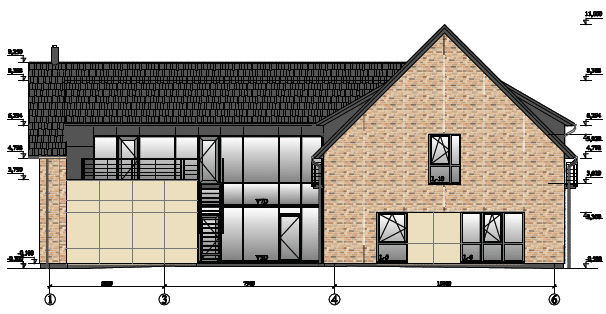
FAÇADE OF THE PLANNED CRISIS CENTRE BUILDING
Architects: NEOFORMA, Klaipeda.
Aage Myhre
aage.myhre@VilNews.com
- Bookmark :
- Digg
- del.icio.us
- Stumbleupon
- Redit it
VilNews e-magazine is published in Vilnius, Lithuania. Editor-in-Chief: Mr. Aage Myhre. Inquires to the editors: editor@VilNews.com.
Code of Ethics: See Section 2 – about VilNews. VilNews is not responsible for content on external links/web pages.
HOW TO ADVERTISE IN VILNEWS.
All content is copyrighted © 2011. UAB ‘VilNews’.

 Click on the buttons to open and read each of VilNews' 18 sub-sections
Click on the buttons to open and read each of VilNews' 18 sub-sections 
















































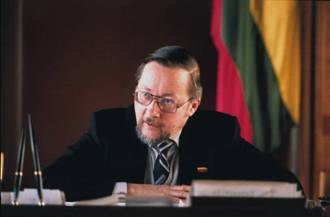


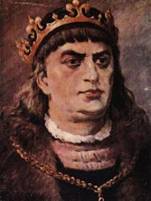



















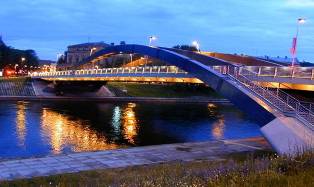
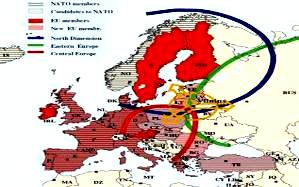

















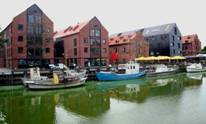



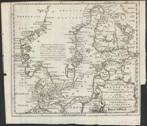
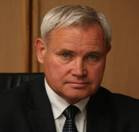
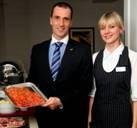

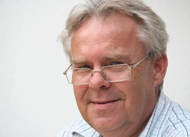
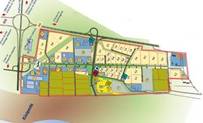

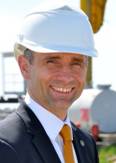
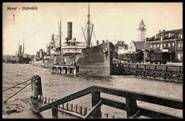
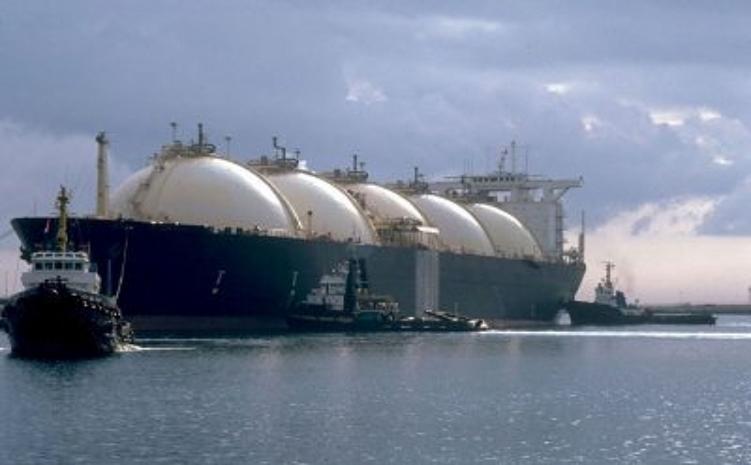





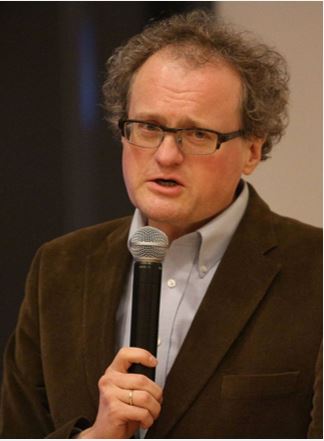
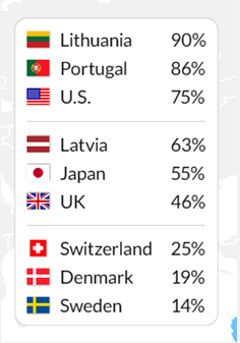
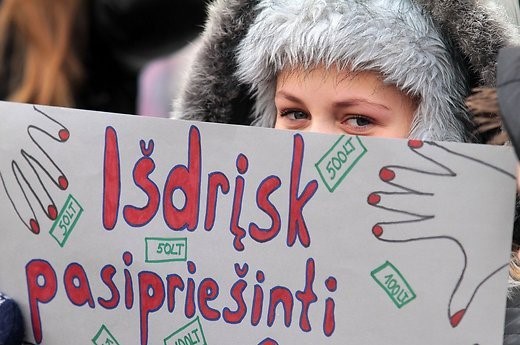


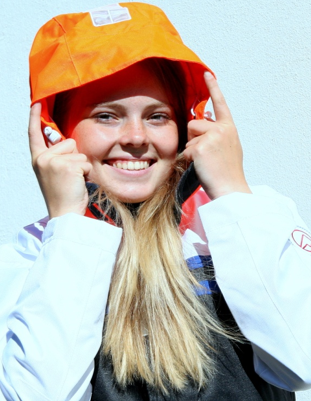
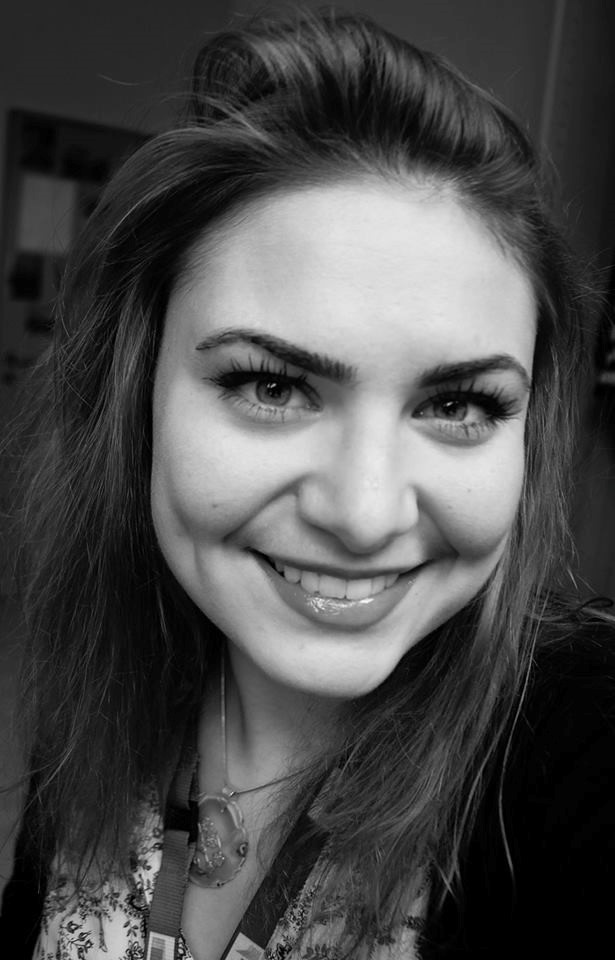
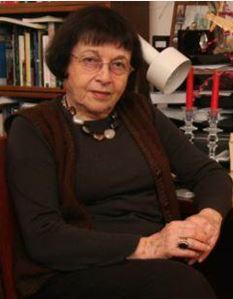
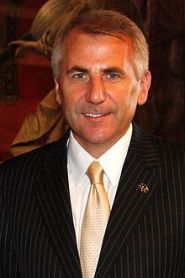
.jpg)
